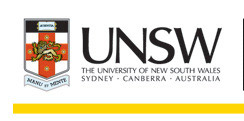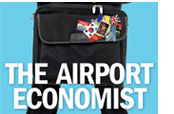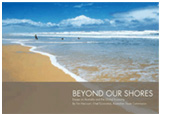Business Cycles – the economics of Lance Armstrong
By Tim Harcourt*
So who’s the dope now? Lance Armstrong, the man who once was a seven time winner of the Tour de France, spoke to US talk show supremo, Oprah in a no holds barred tell all confessional.
So why did he do it? Surely the risk of being caught doping was too much. What was he thinking? What were the incentives for Lance Armstrong to take this extraordinary path of drug ridden corruption in an major international high profile sport?
Our good friends Steven Levitt and Stephen Dubner have already given us a few clues and a good framework in their famous bestseller Freakonomics. In one of my favourite chapters, ‘What do School teachers and Sumo Wrestlers Have in Common?’ they outline the economic incentives to cheat in the classroom and the Sumo ring. As the Freakonomics authors say everyone responds to moral incentives and social incentives because as WC Fields says – a thing worth having is worth cheating for. If morality is how we would like the world to work and economics represents how it actually works, then it’s no surprise that sumo wrestlers, school teachers and Lance Armstrong and his cyclist mates act like this. It was a classic case of ‘prisoner’s dilemma’, as you had to take drugs to compete in the Tour de France, and if you didn’t you wouldn’t qualify. Once the ring was set up, no one could confess on their own without consequences. And Armstrong as the leader of the pack, made sure everyone was juiced up and was not going to confess to the anti-doping authorities. But like sumo wrestlers, school teachers and Enron executives, the great Lance did eventually get caught and as they say in Freakonomics if you wondered whether business executives cheat because they think they have a sense of entitlement, then ask how they became business executives in the first place!
So that’s the microeconomics of Lance – what about the macro big picture?
First, there are clearly implications for the sport of cycling. The official cycling body clearly got caught with their lycra down on this one and will need to clean up the sport or lose sponsors and community sport.
Second, there are implications for Livestrong – Lance Armstrong’s charity for his fellow cancer sufferers and survivors. There is a whole infrastructure built up around the foundation and surely any damage on to the Lance Armstrong brand must have had collateral damage for foundation as well?
Third, there may be economic implications for special events like the Santos Tour Down Under back home here in Australia. According to latest estimates, from McGregor Tan, Tour Down Under in 2012, generated $42.2 million in economic impact, with 760,000 visitors, compared to $43.3 million in 2011 (with 782,4000 visitors) and $41.5 million (770,500) in 2010. This compares well with the economic impact half a decade ago in 2008 of only $17.3 million (with 548,000 visitors). The Tour Down Under has been building strongly and sustainably over a number of years now and will continue to do so as it further establishes itself as a major international sporting event. And despite the obvious effect of drawcards, Test Cricket survived without Bradman, Golf without Tiger woods, AFL without Carey and Santos Tour Down Under will be sustainable even without Lance Armstrong.
And fortunately, rather than relying on one event, South Australia has hedged its bets. As well as the Santos Tour Down Under, and the future benefits of the Adelaide Oval development (especially the return of AFL to the famous ground), Adelaide’s position as the Creative Capital of Australia is illustrated by its cultural iconic events, the Adelaide Festival, Fringe and WOMAD. Together, with the Clipsal 500, according to the McCrann report, they are estimated to have contributed around $81.1m economic impact to the state and attracted 46,481 interstate and international visitors in addition to the 796,700 local South Australians.
So, doping or no Doping, Lance or Lance-less, the show must go on! And it will go on with cleaner and greener cycling at the Santos Tour Down Under in South Australia in 2013.
*Tim Harcourt is the JW Nevile Fellow in Economics at the Australian School of Business, UNSW, Sydney, Australia & author of The Airport Economist www.theairporteconomist.com
He is also the inaugural Adviser – Global Engagement to the Premier of South Australia, Hon Jay Weatherill, MP.













No Comments so far ↓
Comments are closed.